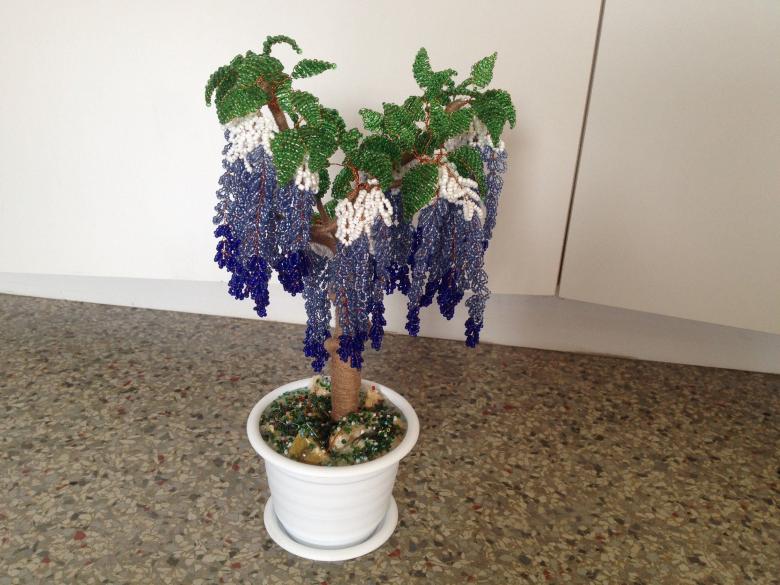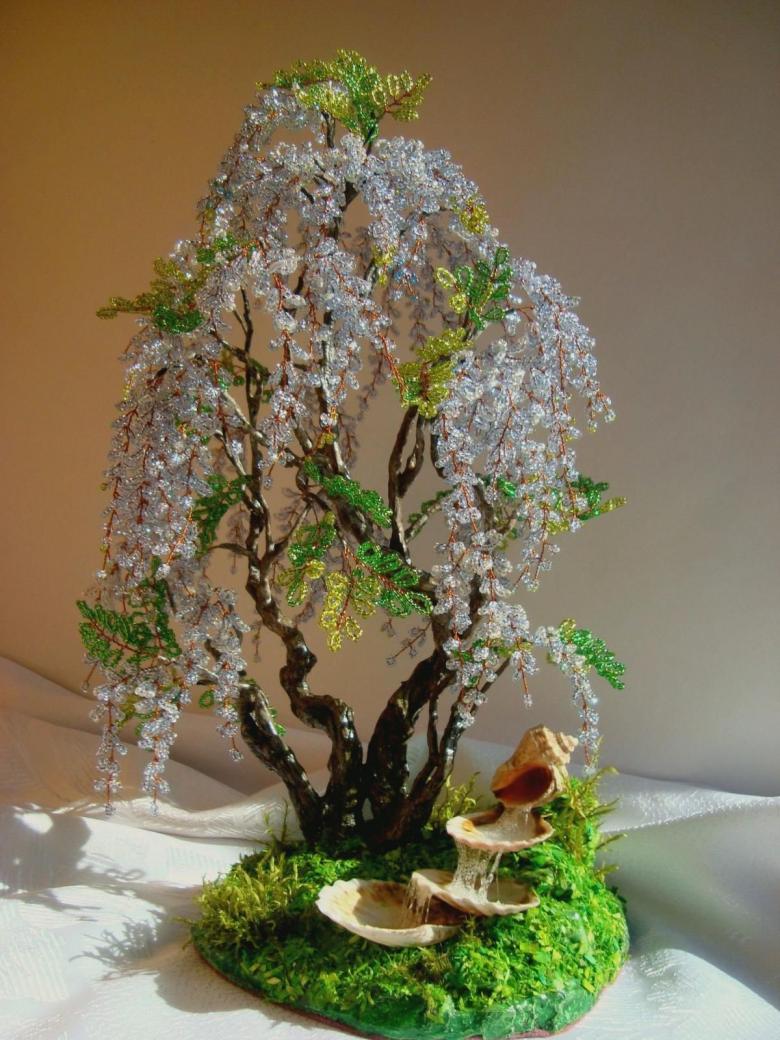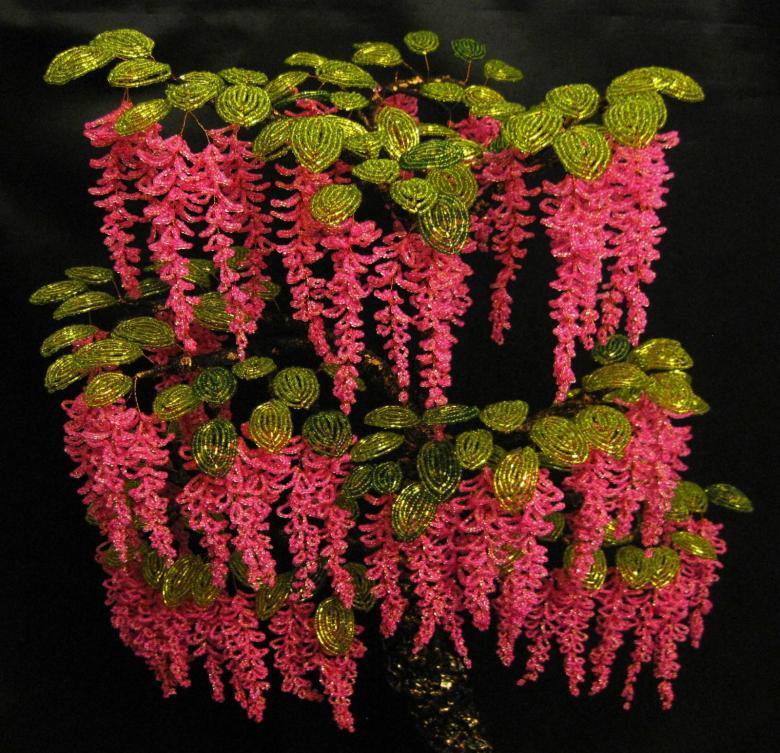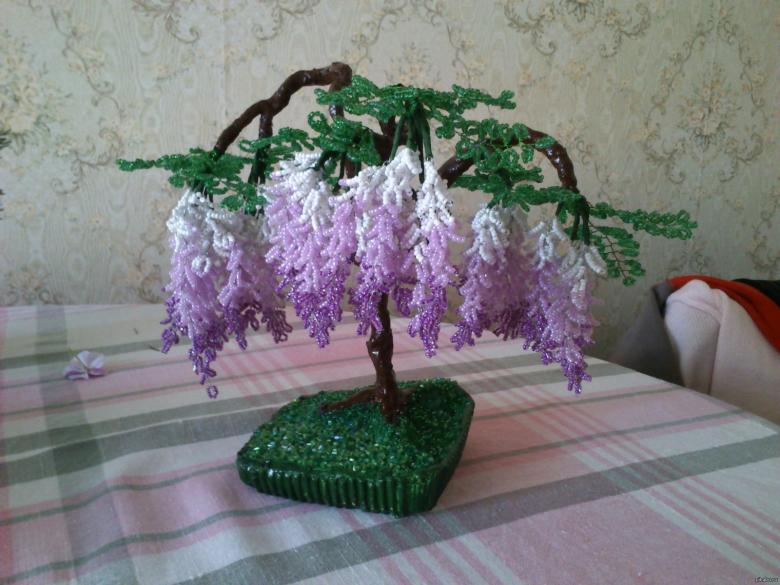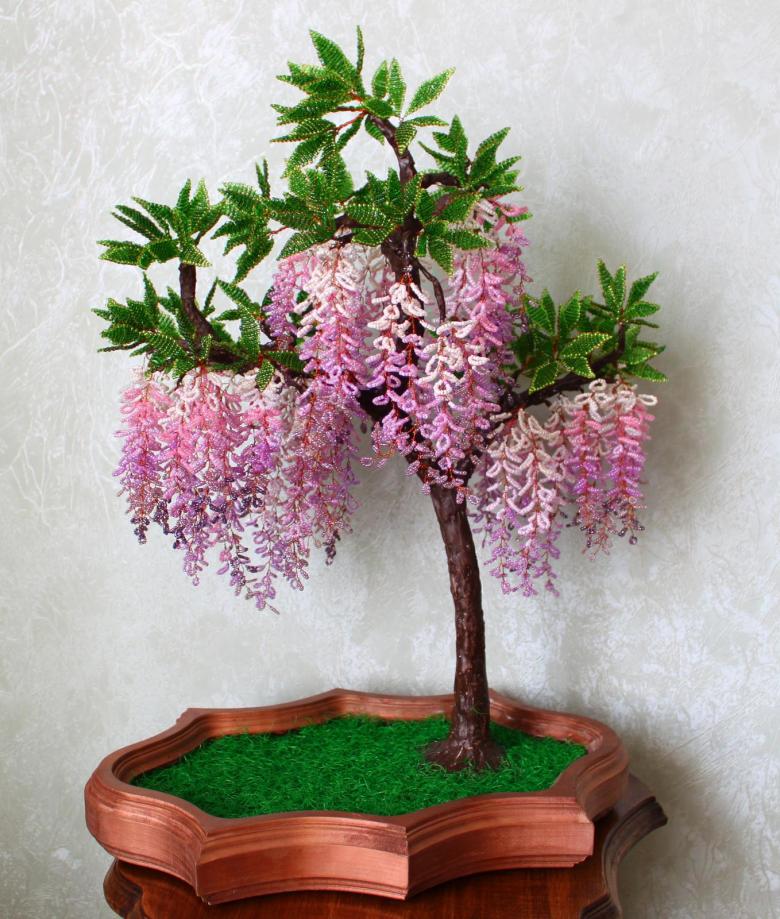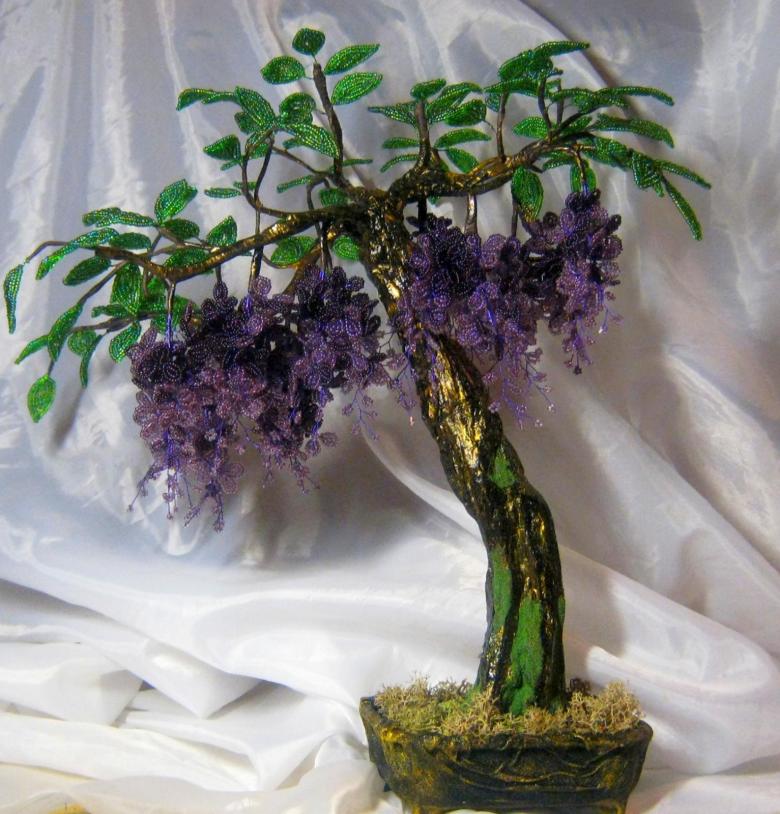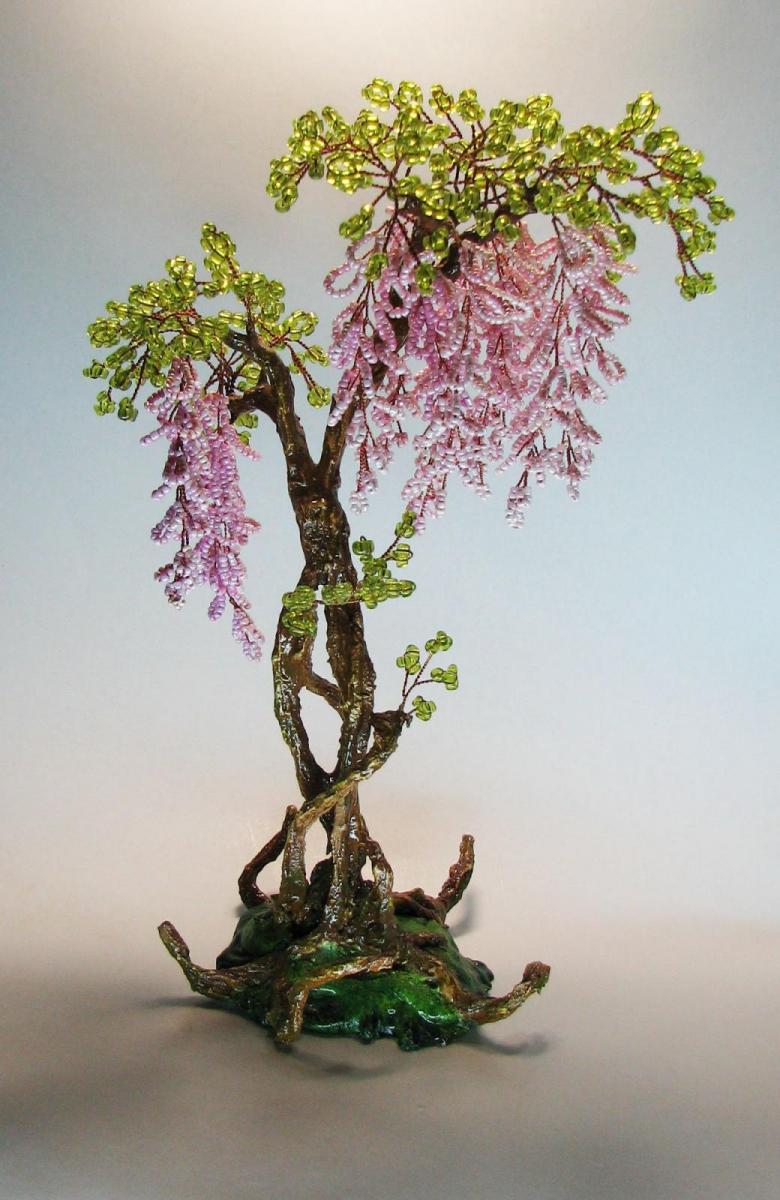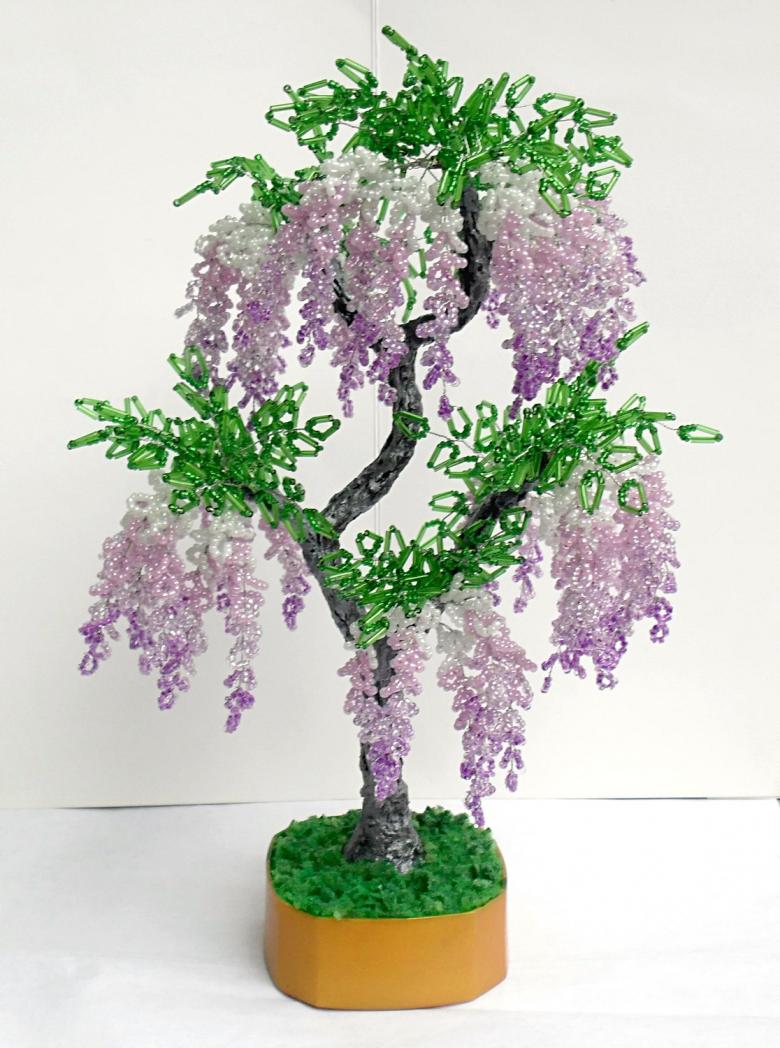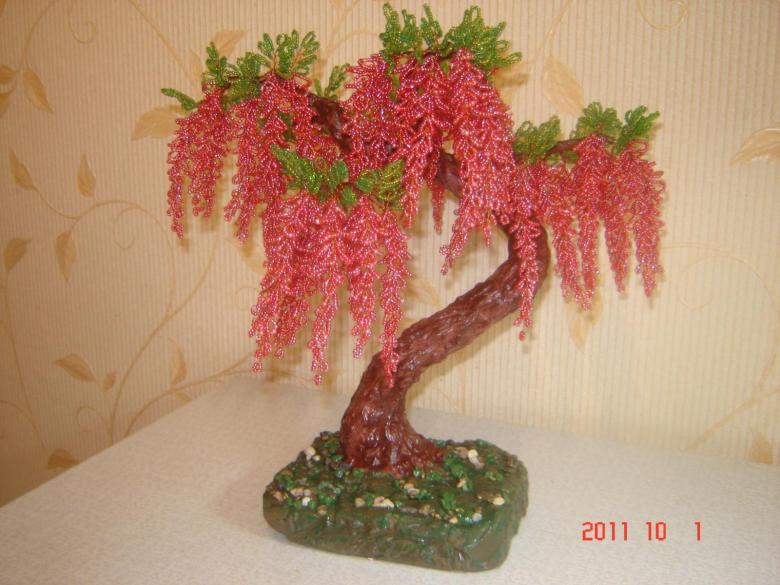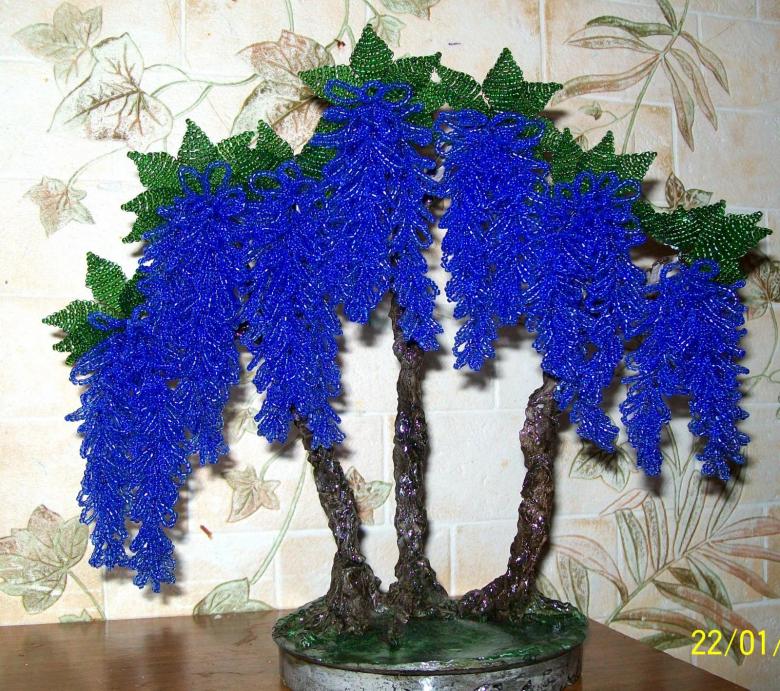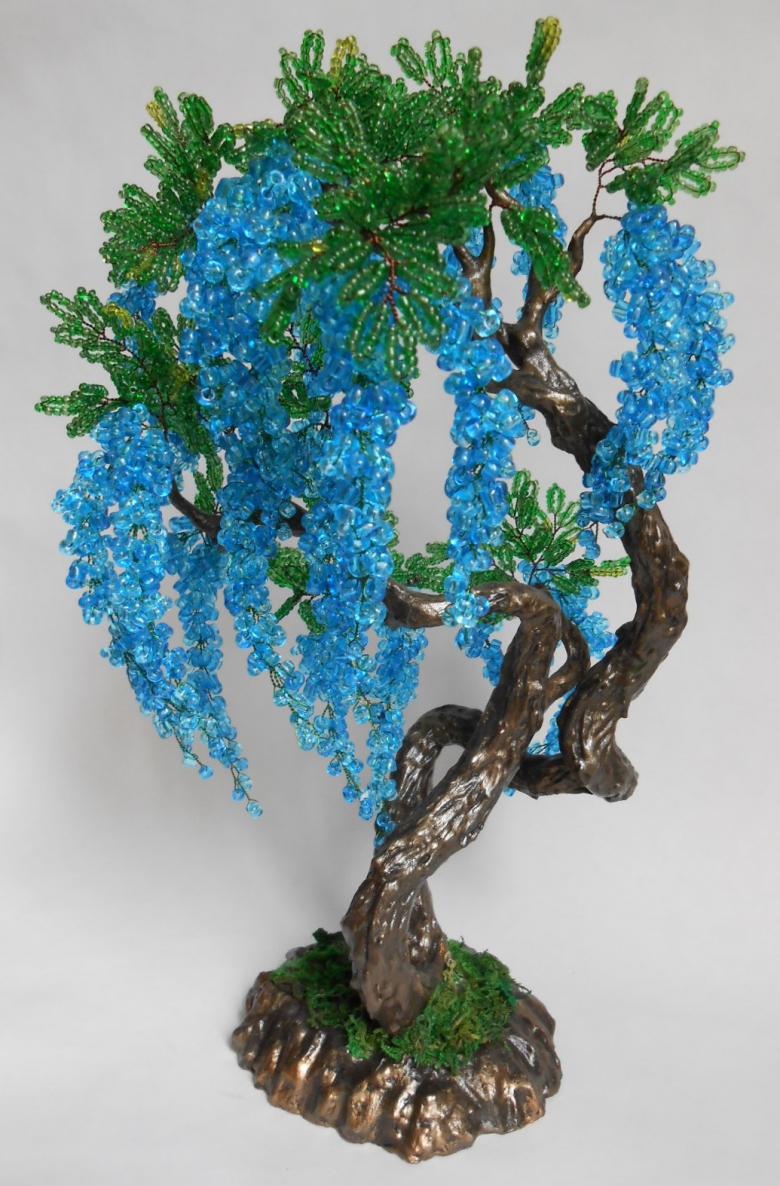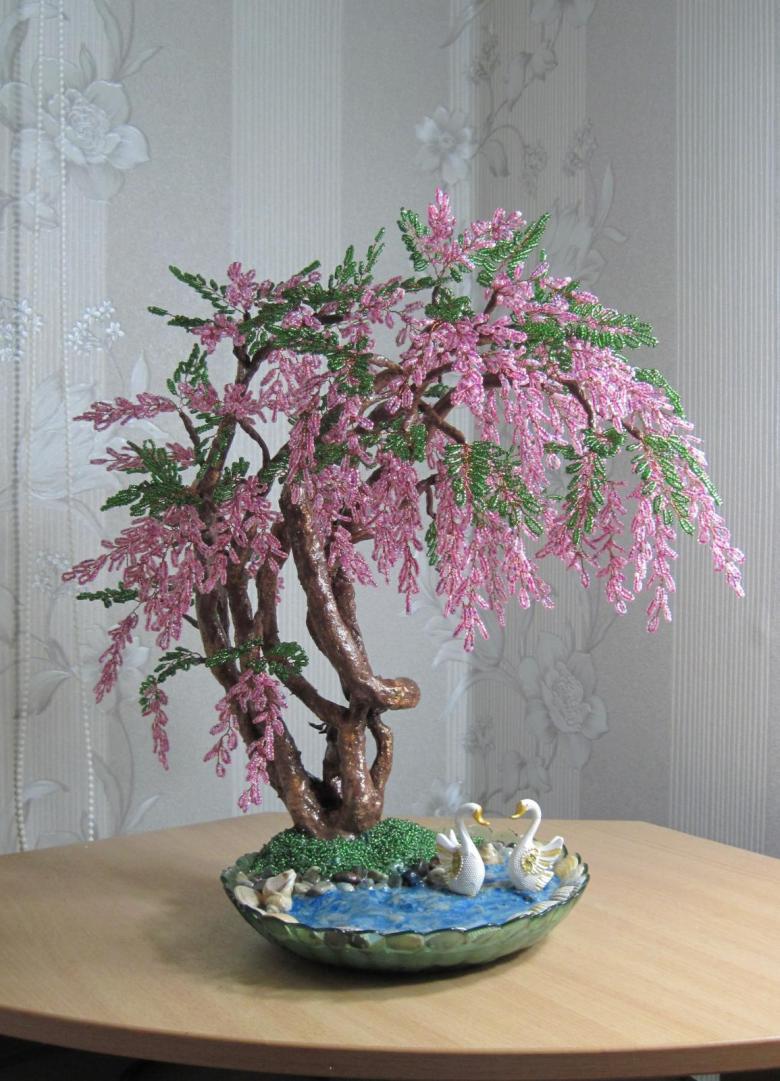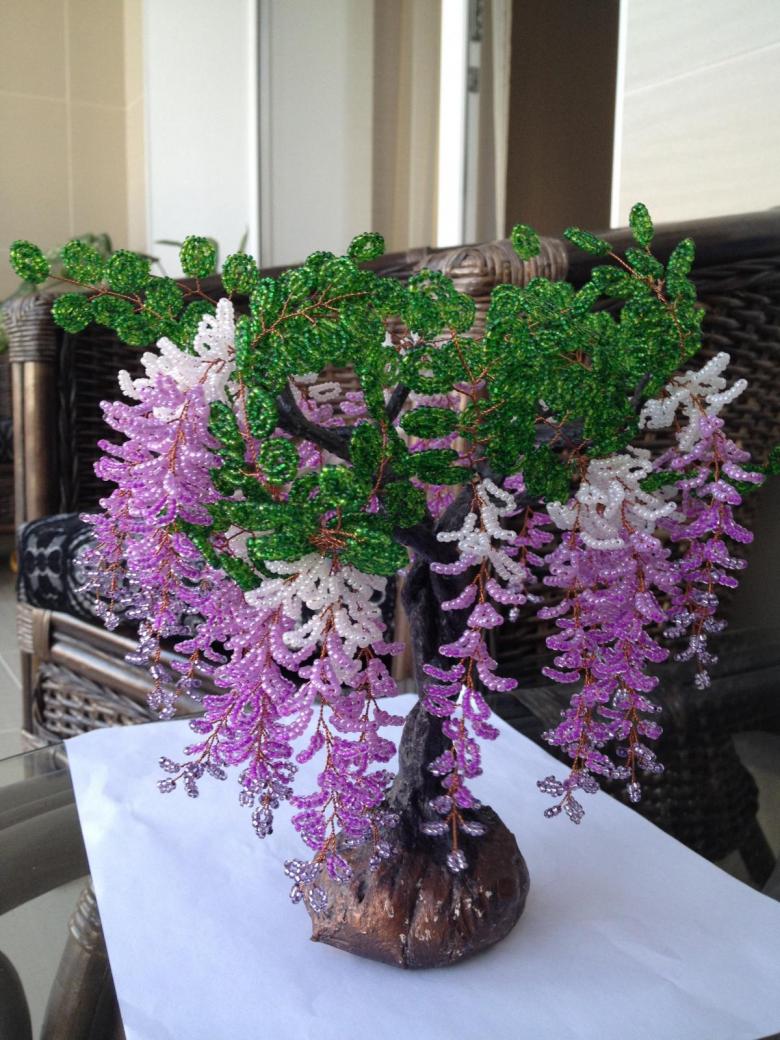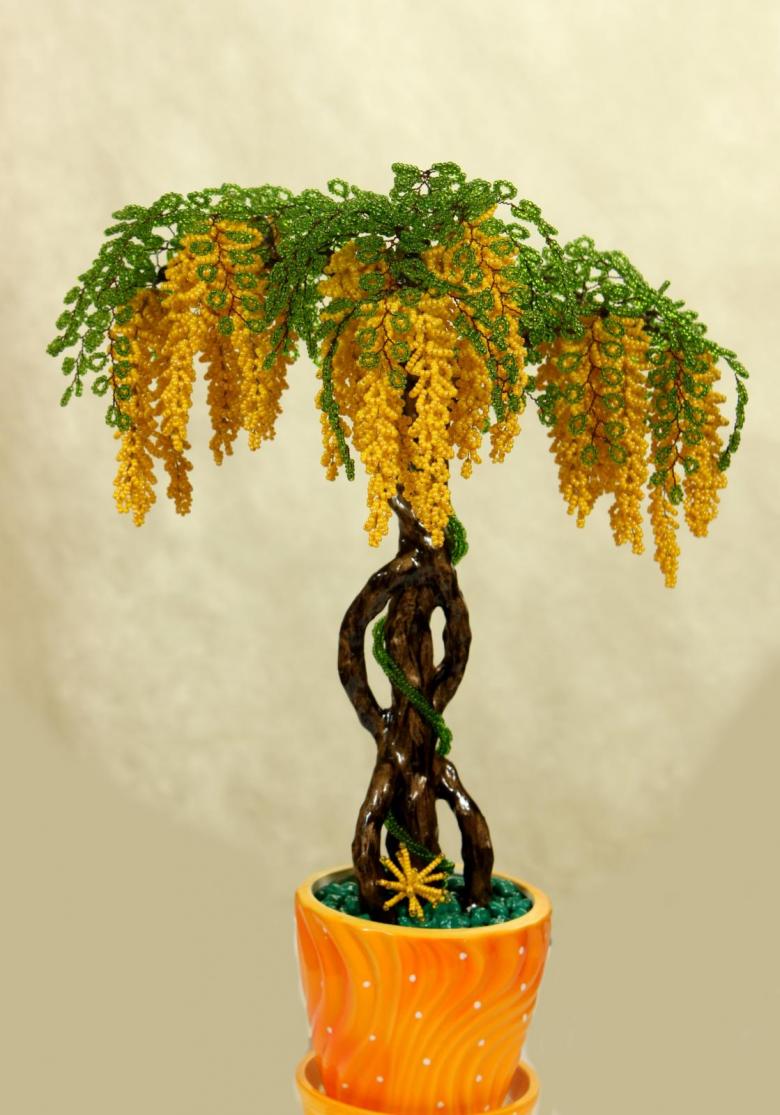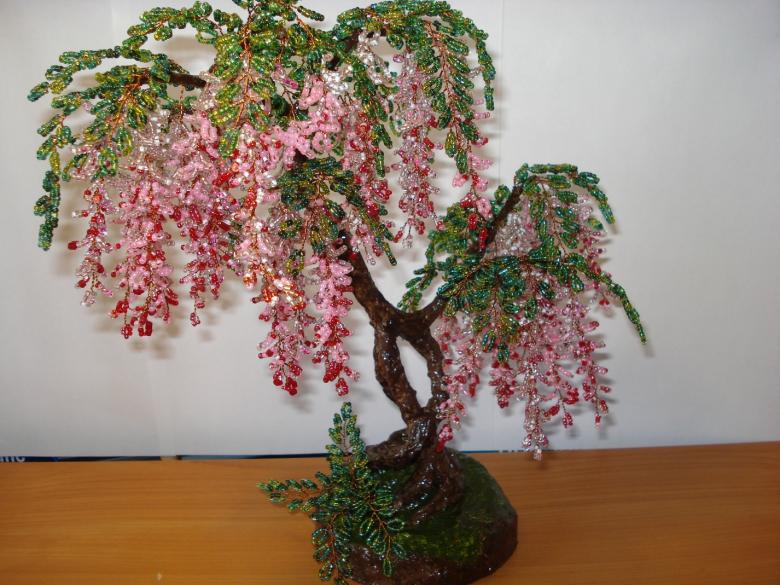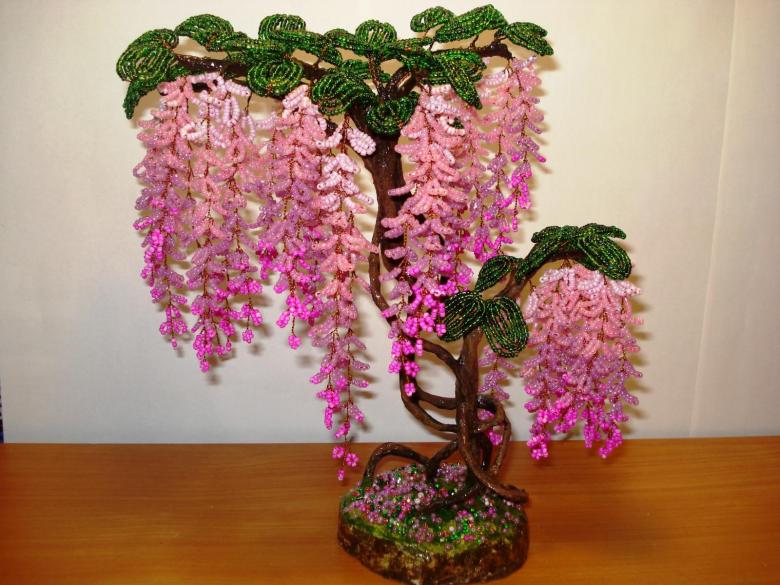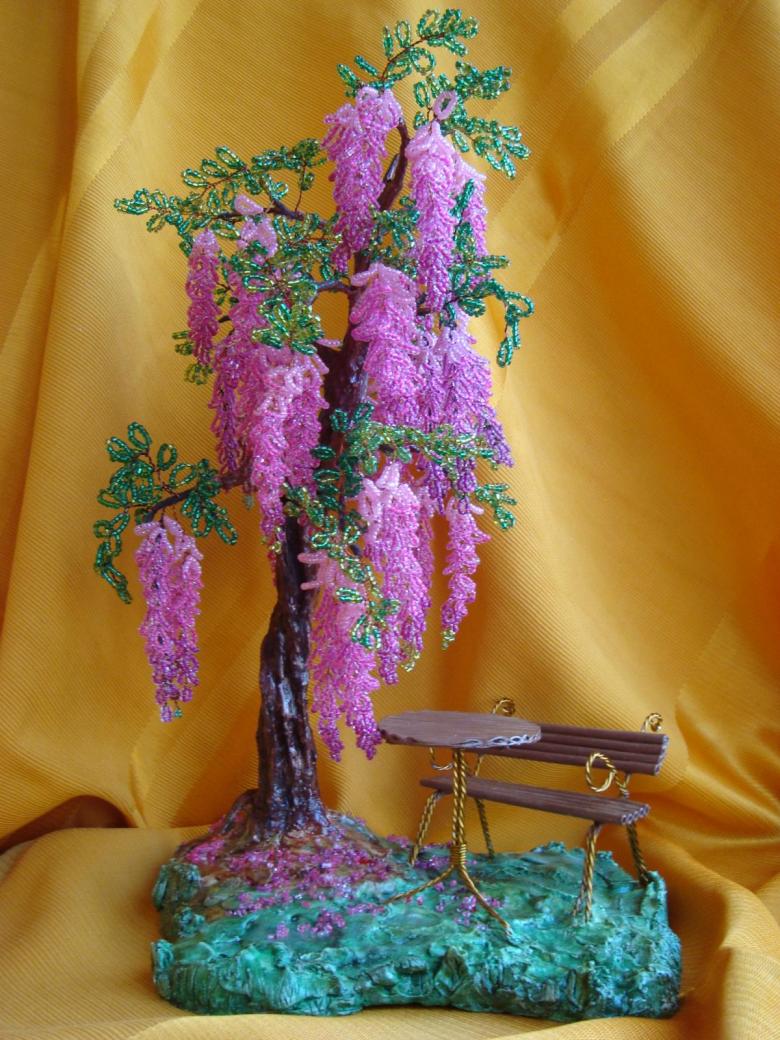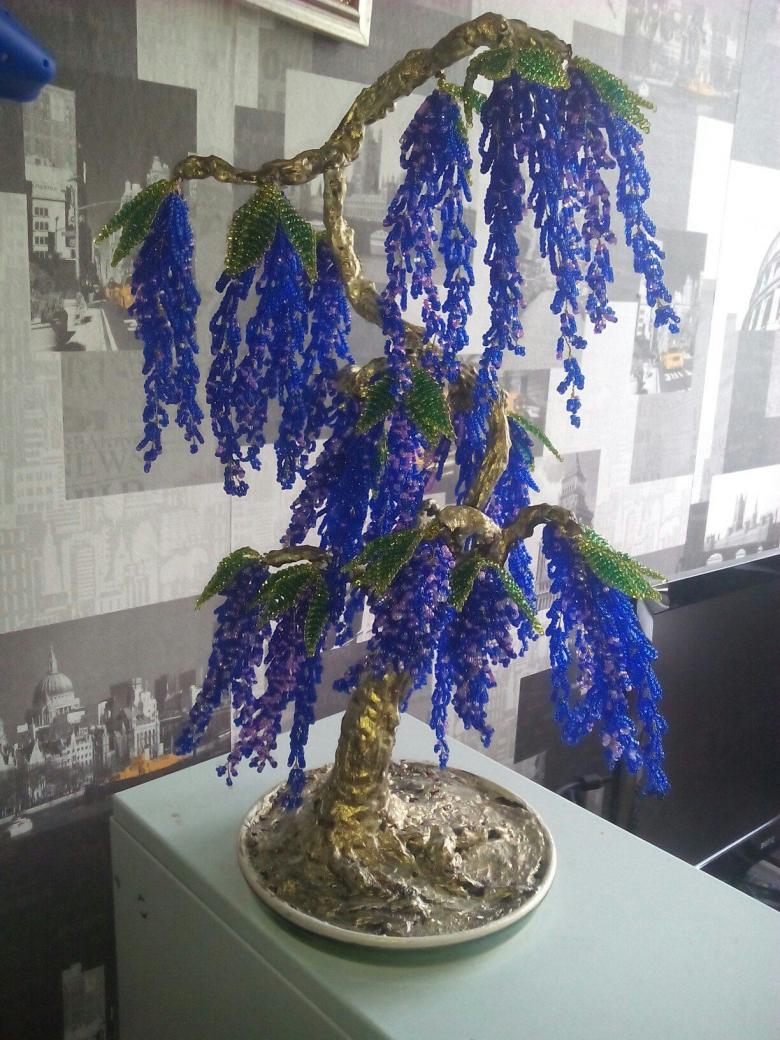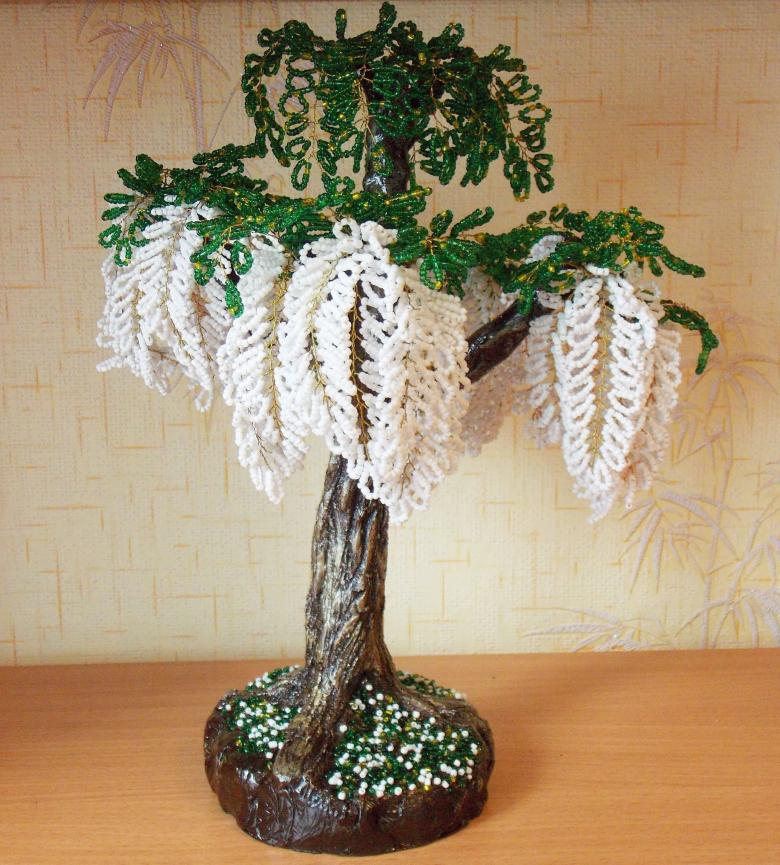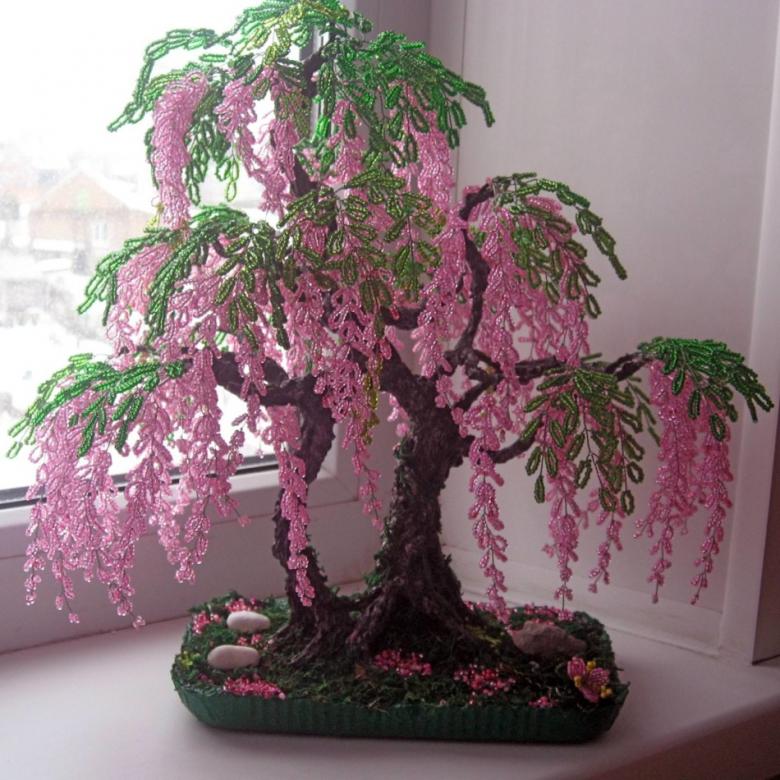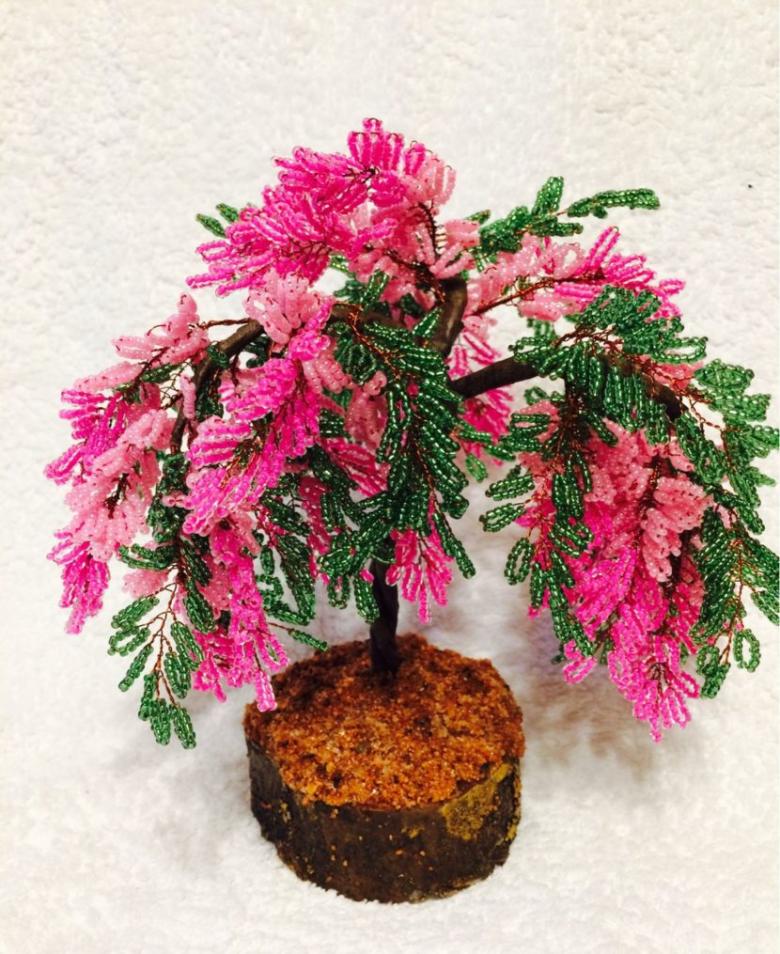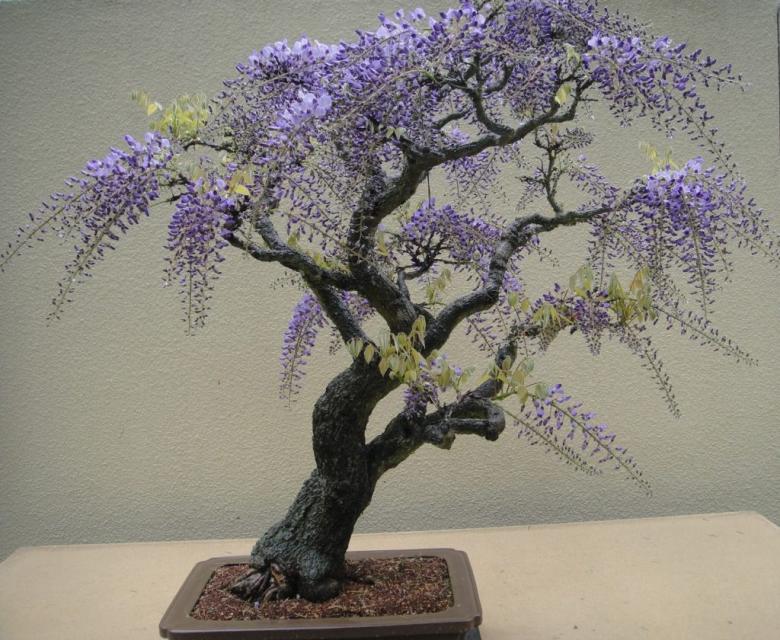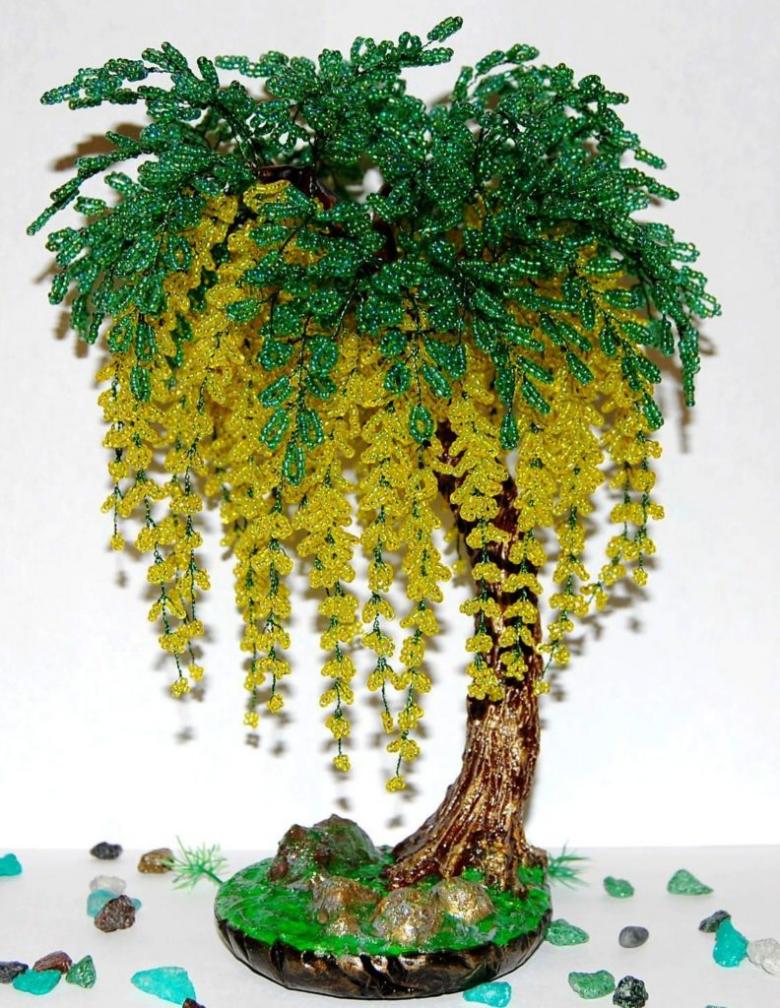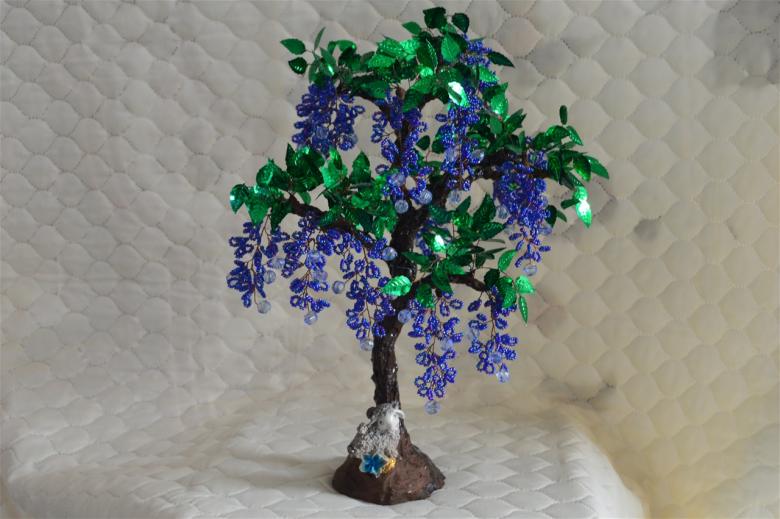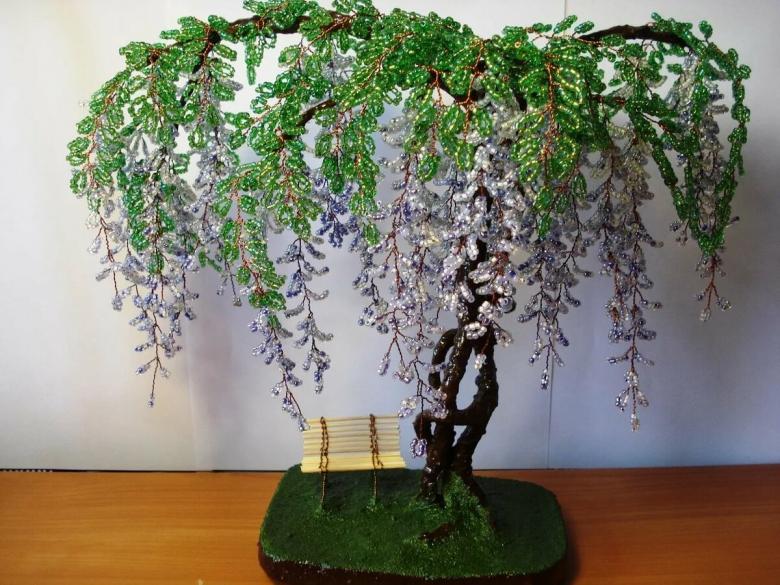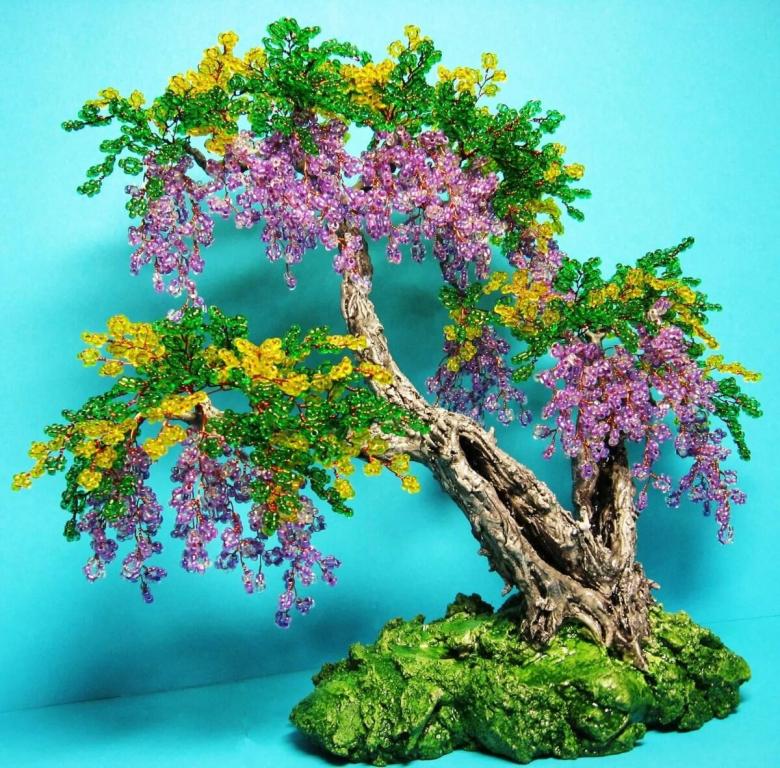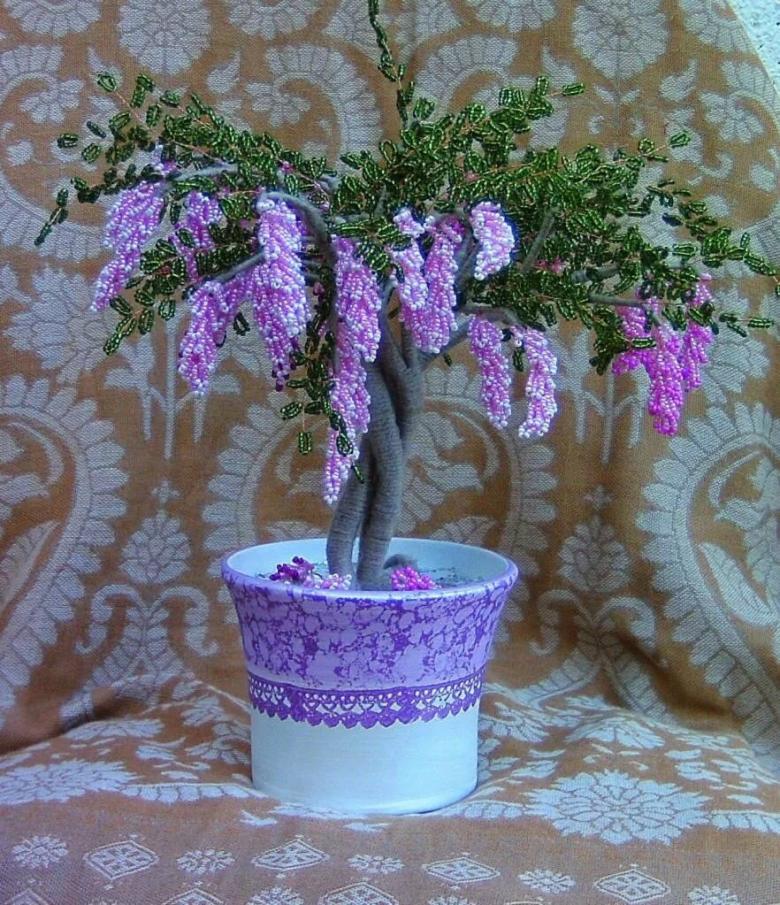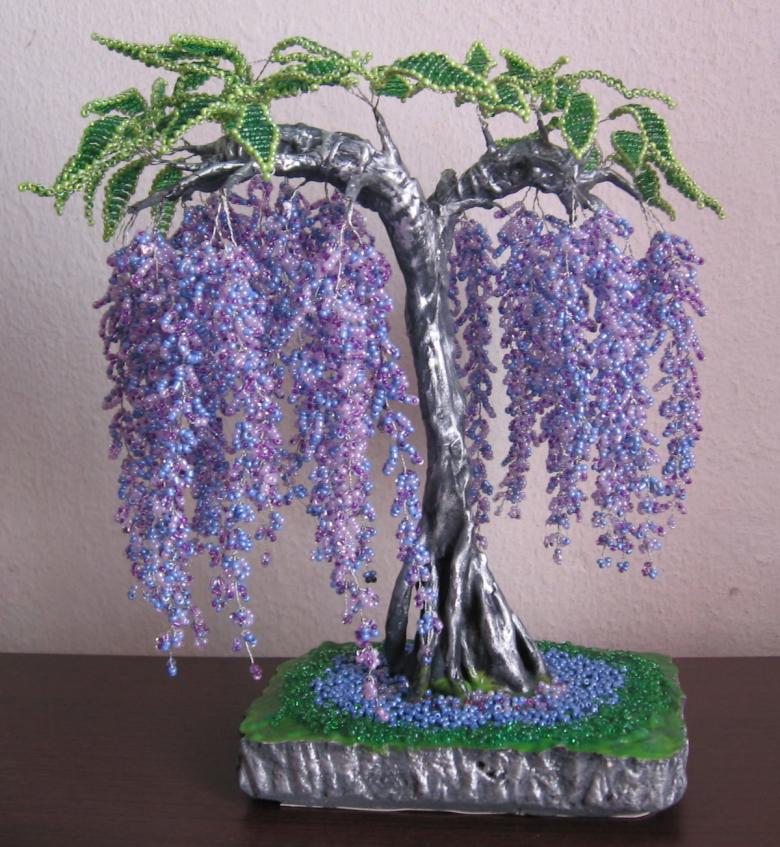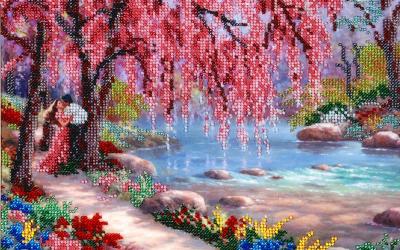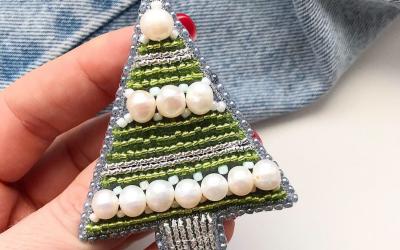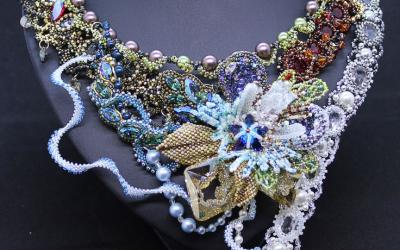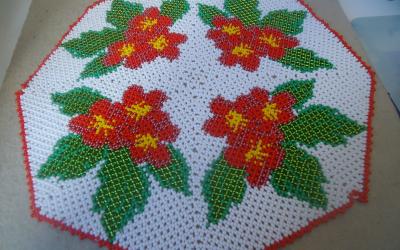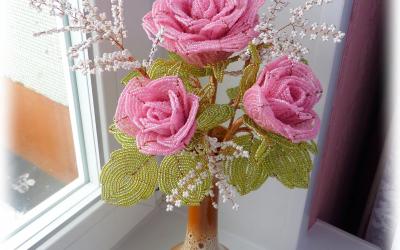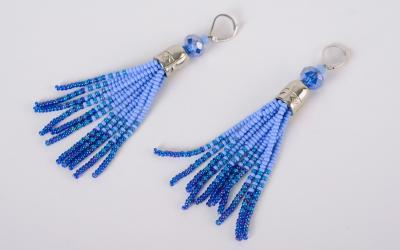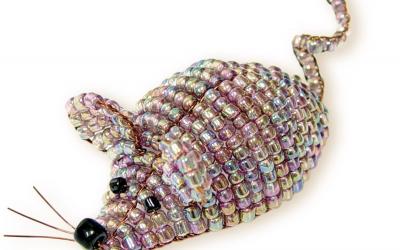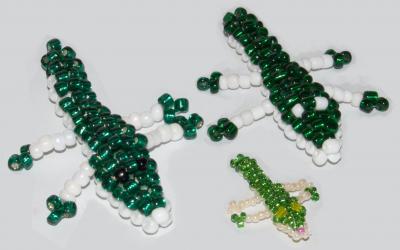Wisteria beads - making decorative plants from beads
Wisteria is a very beautiful plant that can be made without leaving the house. We are talking about weaving wisteria from beads. Such a tree will not only please with beautiful blossoms, but it can also be equipped with all sorts of devices on the type of a night light or a container for displaying fruit on the table. This article will give detailed information on the step by step making of wisteria from beads.

Wisteria beading techniques
The art of beading has been known to the world for a long time. A large number of different weaving techniques has been invented:
- Conventional weaving(flat parallel). It consists in a successive set of rows of beads connected to each other. In the final version of the product will be flat, the rows of beads will be clearly visible.
- Needle weaving. Suitable for making such elements as stamens and sharp leaves. Achieved this weaving by forming a tight loop, which in course version will look like a small needle. This technique can be attributed to the auxiliary, as rarely there are items consisting only of needles.
- French weaving. This technique is suitable for making round or oval elements, such as leaves or petals. Usually one middle row is taken as a basis, around which arcs are twisted with a constant increase in the number of beads.
- Volumetric parallel weaving. This technique is similar to the usual technique, the difference is that the rows do not lie in the same plane, but in different ones. Thanks to it, you can make three-dimensional crafts of animals or other products.
- Loop weaving. Another auxiliary type, weaving is carried out by creating a large number of different loops, which are combined into compositions such as flowers, twigs or bunches.
- Openwork weaving. Used as decoration, various objects of round shape are braided. Thanks to this, a beautiful pattern appears on them.
- Brick weaving. Beads in this technique are arranged in rows, they lie like bricks in a masonry. Refers to the category of dense weaving. Suitable for creating trinkets.
- Mosaic weaving. The difference from the brick one is that the weaving is not carried out in horizontal rows, but in vertical ones. Suitable for creating trinkets.

Materials, necessary for weaving
- Beads. To make a wisteria, it is best to use small beads, the plant will look more elegant. You need a few colors, green for the leaves, a few shades of blue and white to make the flowers. Flowers can be made of any shade, it all depends on the desire of the master.

It is best to use beads made in Japan or in the Czech Republic. Manufacturers from these countries make the highest quality beads, which have almost no defects.

Types of beads:
- Regular. Standard beads are round or rectangular in size.
- Chopped. Small, short tubes, up to 5 millimeters long.
- Glass beads. Long tubes, can be up to 3 centimeters long.
- Wire of several sizes. The smallest wire of 0.3 mm is suitable for making flowers, larger wire will be used to connect the parts. A size 1 and 3 millimeters are needed to braid the trunk and connect the whole composition.
- Alabaster for the base of the flower.
- Glue.
- String for beading.
- Decorations, these can be beads of different sizes and small stones.
- Pot.
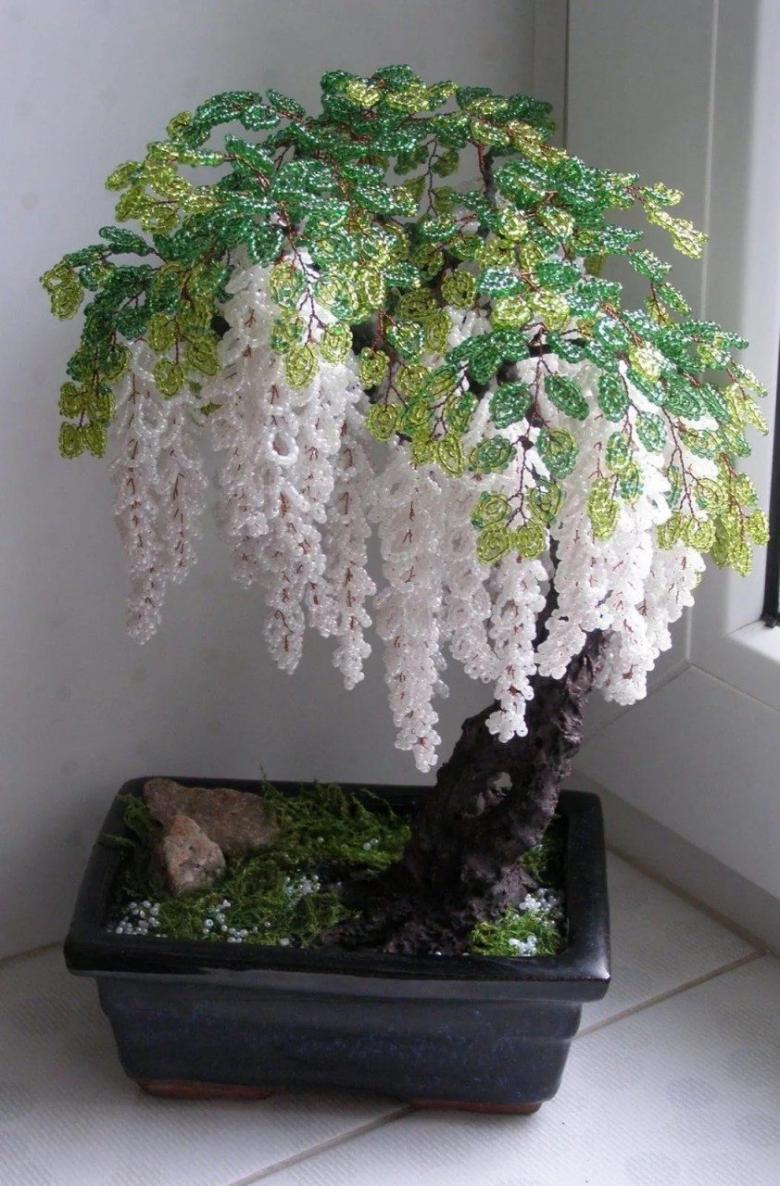
Examples of work
A very important element in understanding the technology is to get acquainted with the master classes on weaving wisteria from beads.

Wisteria from beads
Sprigs
The production begins with the branches, for this purpose it is necessary to cut a wire with a length of about a meter. Further weaving is carried out according to the following algorithm:

On the wire, 7 beads are strung, a loop is made, 3 beads on each side and one in the middle.
- The first loop is fixed, and then on each side of the loop are woven similar loops.
- After a set of the first 3 three loops fix them with a wire, subsequent weave with the addition of 2 additional beads of lighter color.
- Subsequent rows are braided with the addition of one extra bead. At the end of the work on the 13th row there should be 19 beads in the loop.
- After weaving the brush neatly gather all the loops in one bunch.
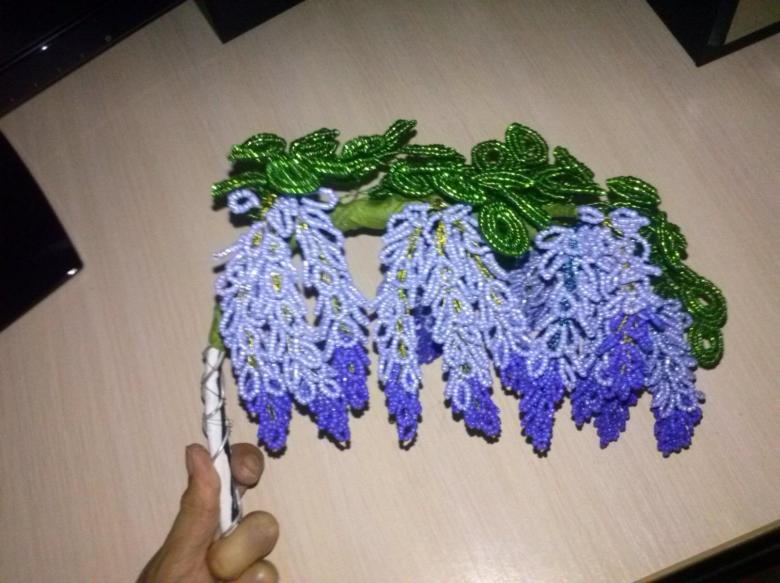
Leaves
There are two techniques of weaving leaves.
First:
- Take a wire length of 50 centimeters.
- From one indented a small distance and strung 11 green beads. A loop is made, which is twisted a few turns.
- On the long end begins to make similar loops, a total of 10 pieces.
- Loops are collected in a sprig and twist. In total, the number of twigs should be equal to the number of bunches.
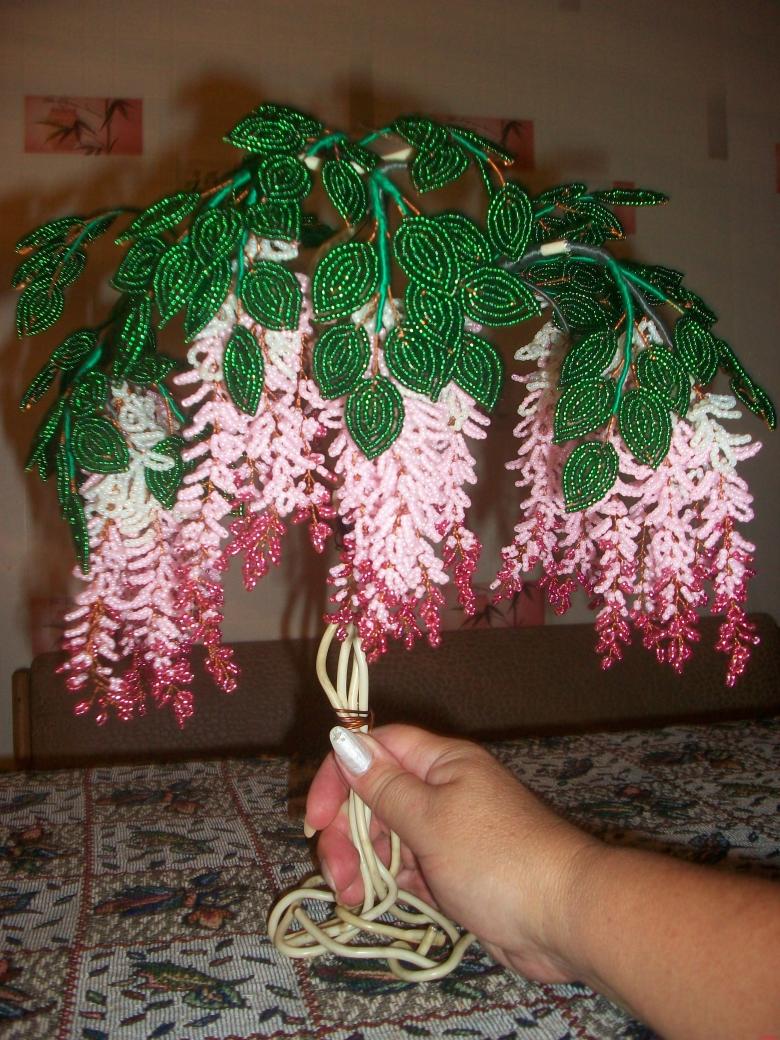
Second:
- We take a wire of 30 centimeters.
- It threaded 3 beads, the second end of the weave through 2 beads. Weave a parallel technique.
- Each subsequent row adds 2 beads.
- When the beads in a row of 6, you need each subsequent row to remove one.
- Finally, on the last row should be 2 beads, then do twist.

Assembly
- One leaf is taken and connected to the bunch, twisted into 3 turns.
- On the other side is twisted another bunch, it should lie along the entire length. A total of 4-5 bunches should turn out on one branch. To connect the elements it is best to use a wire of 1 millimeter.
- After assembling each branch, the wire is wrapped with a special scotch tape or green thick thread.
- Next, along the trunk, which was made from wire of 3 millimeters, the remaining branches are attached in 1-2 centimeters each.
- After completing the formation of the tree, the leaves are given the appropriate shape.
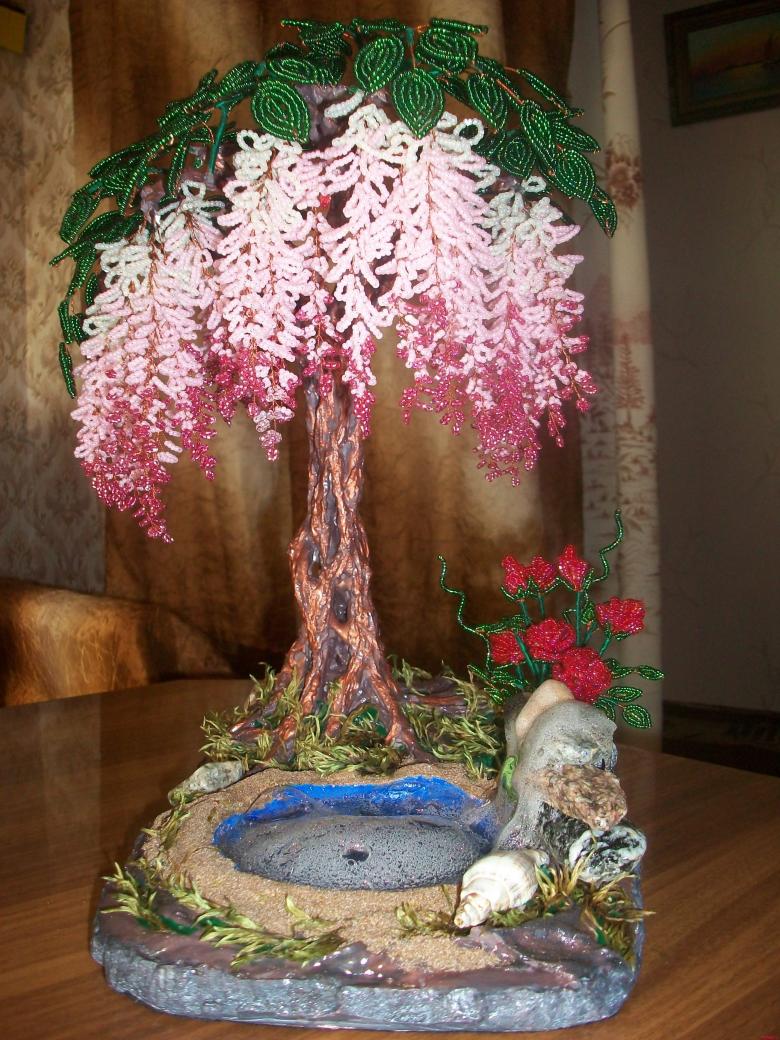
It remains only to install the wisteria in the pot. To do this, a mixture of plaster, glue and water is made. This mixture is poured on 2/3 of the pot, it can also be covered the trunk to give it an impressive size. In the end, when the mortar hardens, it can be wrapped with green thread or painted with green paint.
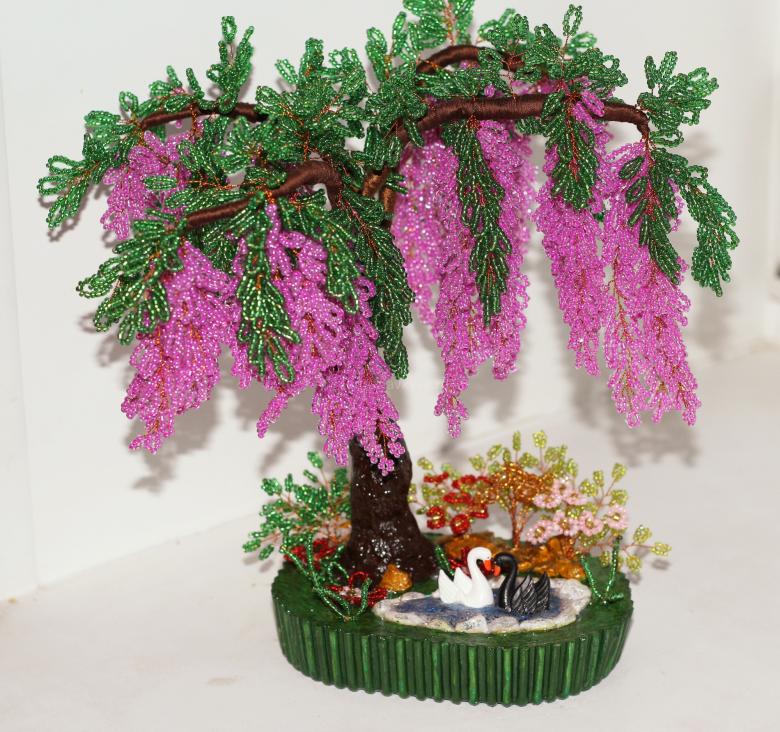
To give the plant an extra sparkle, the beads can be treated with varnish.
Beading is a very interesting hobby, thanks to it you can learn to create beautiful crafts that will be a great gift for family or friends.

On the Internet there are many different options for crafts, ranging from the simplest, which are suitable for beginners and very complex, it is very difficult to distinguish them from the real plants. Wisteria is not a complicated craft and can be done even by a beginner, as its weaving uses the simplest techniques.

